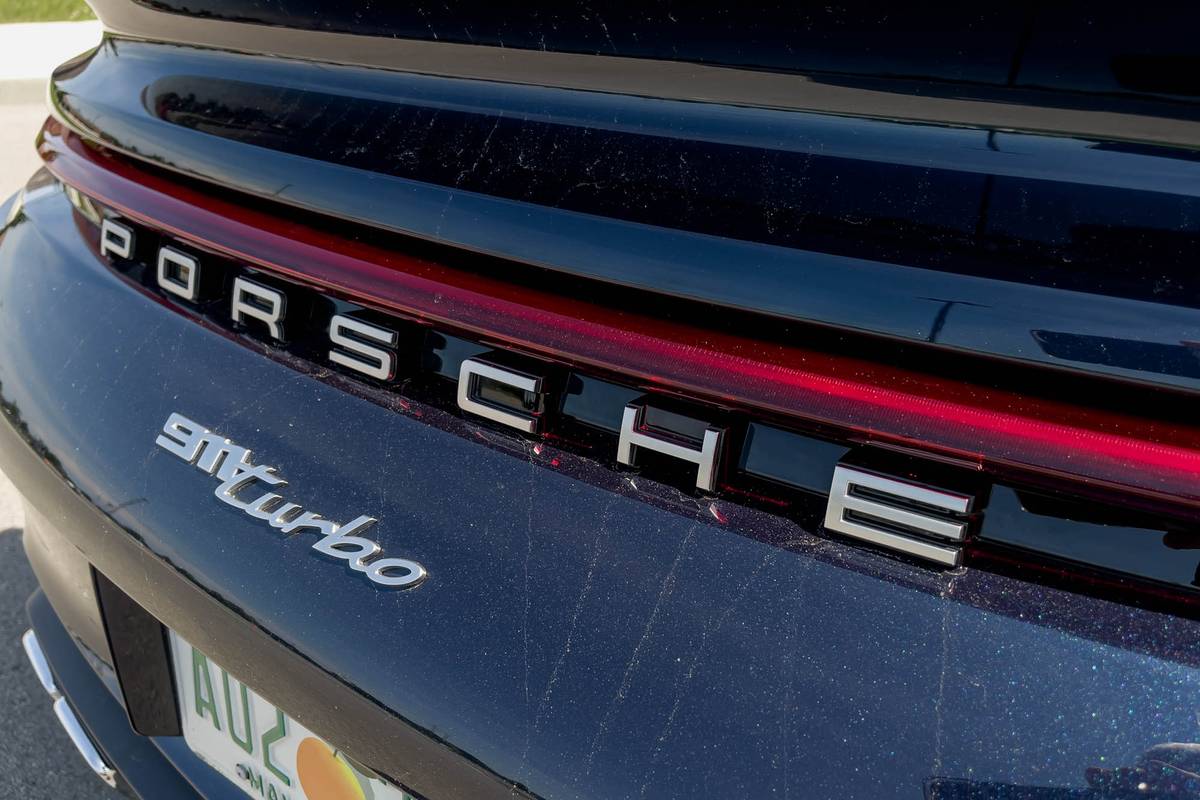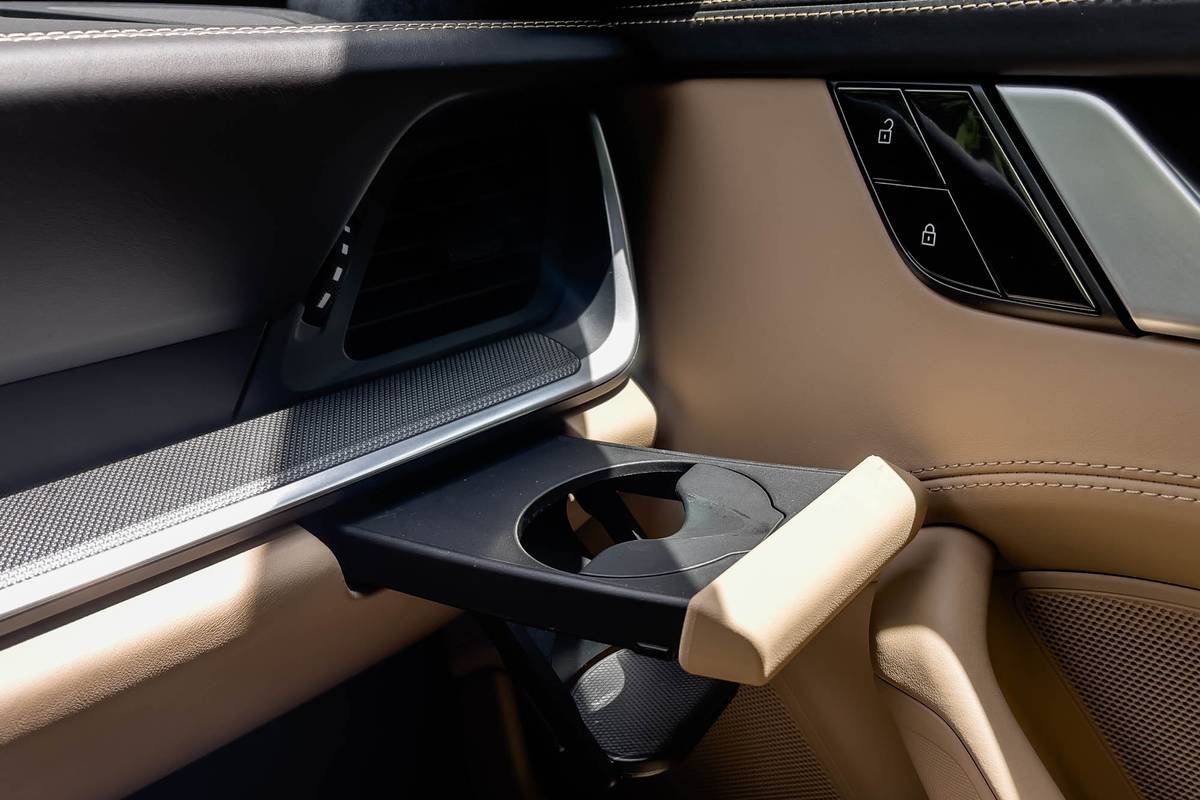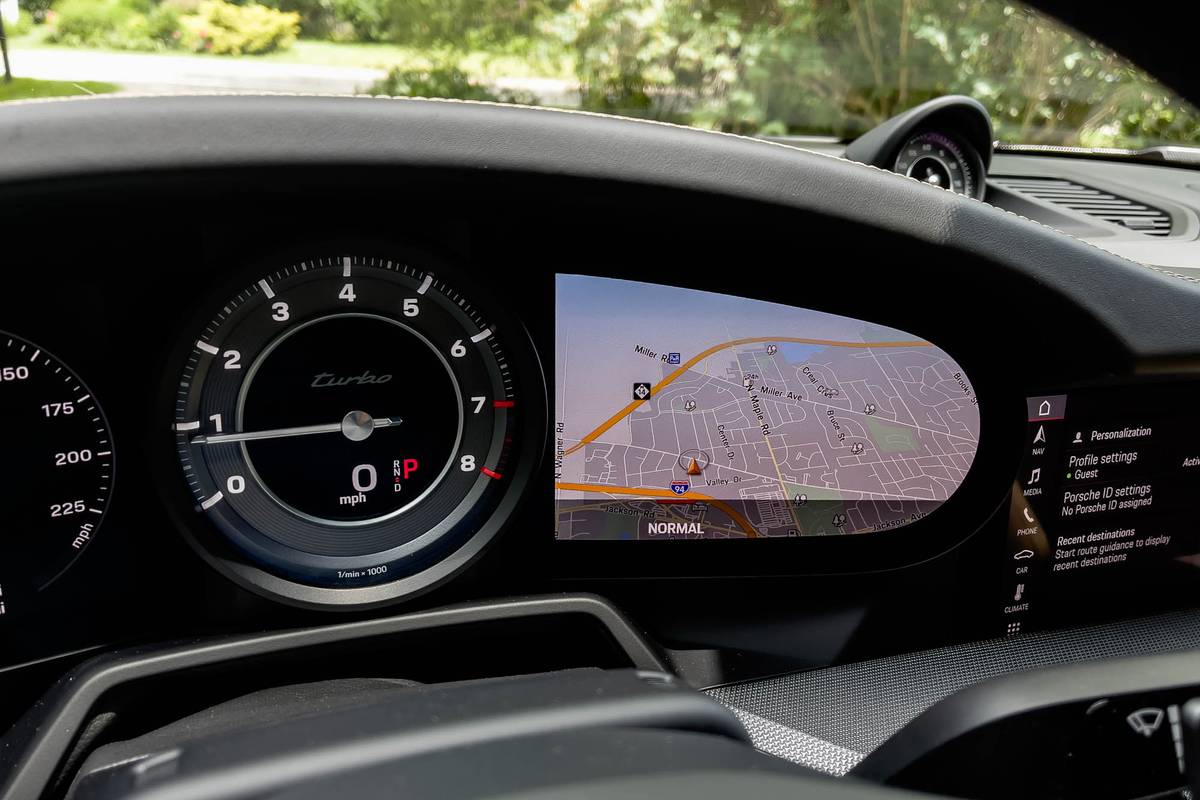
The verdict: More a luxury grand tourer these days than a hardcore sports car, Porsche’s flagship 911 is still an amazing (and expensive) leather-lined beast, and it carries on its storied legacy.
Versus the competition: Porsche’s latest 911 Turbo aims for models like the Mercedes-AMG GT and the Bentley Continental GT — super-expensive personal luxury coupes that also happen to be blisteringly quick; if you’re looking for a more track-oriented sports car, there are better versions of the 911 to consider.
You just have to love the Porsche 911. For decades now, few vehicles on the planet could claim such a single-minded purpose — a mission so dedicated they’ve barely wavered since their introduction. But in the wake of a massive, global consumer shift toward tall-riding wagons masquerading as all-purpose off-road vehicles, the 911 stands firm as a purpose-built sports machine. It seats two comfortably (four in your dreams), with state-of-the-art suspension technology, exceptional handling and looks that are immediately recognizable a mile away.
Related: 2021 Porsche 911 Targa 4 Review: All the 911 Goodness, Just Breezier
One of the beautiful things about the 911 is that there are a dozen different models and trims to choose from: Do you want a luxury grand touring machine or a razor-sharp, track-focused race car? The model I drove was the new Turbo, which was the 911’s top performance trim a long time ago but has now become something a bit more like a prestige GT, facing off against other super-expensive luxury grand touring coupes like the Mercedes-AMG GT or the Bentley Continental GT. It’s still blisteringly fast and chock-full of technology aimed at making average Joes feel like racetrack heroes, but the point of this new Turbo seems to be filling the role of civilized gentleperson’s tourer. So how does it do in this role?
A Shape for the Ages
There’s almost no reason to talk about the way the Porsche 911 Turbo looks; every successive version is just a slight modification of the prior one, and that’s been the case since its inception. It gets a bit bigger with each generation, a bit smoother and sometimes it incorporates new tech, like LED lights or active aerodynamics. Park a 2021 911 next to the original, though, and the family lineage will be blatantly clear.
That’s not a bad thing. There are few truly iconic shapes in automotivedom, but the 911’s is most certainly one of them. The latest version has a few body modifications versus the old one that result from the model’s bigger changes, which happen under the hood. Turbo versions are always wider than lesser 911 Carrera models, but this new Turbo is even wider than the previous one. All four fenders cover a wider track, front and rear, and the traditional vent openings in the rear fenders have a new purpose: They no longer draw in cooling air (that now happens via a new vent on the decklid below the rear window), they draw in “process air” meant for other purposes, Porsche says.
More Punch Than the Last Turbo
The biggest change for the ’21 model year is the 3.8-liter boxer six-cylinder engine, which now makes 572 horsepower and 553 pounds-feet of torque. That’s a boost of 32 hp over the old car, and Porsche says it makes this 911 Turbo nearly as powerful — and just as quick — as the 2019 Porsche 911 Turbo S. (A new Turbo S is on the way, and it promises to be even quicker and more powerful than the ’21 Turbo.)
Given we live in a world of 700-plus-hp cars that can be bought for a relative song, 572 hp somehow no longer seems like an extraordinary achievement, but it’s all in how you use it — and the 911 Turbo uses it quite well. Porsche says it makes the 0-60 mph sprint in just 2.7 seconds — 0.2 second faster than the prior Turbo. But let’s be real here: That kind of improvement is really just semantics and bragging rights. Your seat-of-the-pants meter is not going to register a 0.2-second difference between two vehicles, even if you drive them back-to-back.
The engine is mated to an eight-speed PDK dual-clutch transmission. It’s the only one available — no manual transmission here — which feels like yet another concession to the Turbo being more of an everyday commuter than an enthusiast’s toy. The transmission, however, is just as well executed as the rest of the car: intuitive, well matched to the engine, adjustable via various modes and always ready to dance. Suffice to say the Turbo’s acceleration is absolutely mind-blowing. A jab at the throttle in any of the car’s sport modes will snap your head back and take your breath away. There’s also a dedicated button on the steering wheel that activates a brief switch into the car’s most aggressive settings for a sudden burst of performance, and it’s too much fun not to push it on a regular basis. My only complaint is that this control should be bright red, not black plastic; drivers need some warning as to what they’re about to experience.
As with all modern 911s, the Turbo’s steering is practically flawless. It provides just enough boost not to be heavy and just enough feedback to tell you what’s going on. It helps secure the Turbo’s status as a brilliant road car.
I love how you can feel things working in the Porsche 911. Piloting the Turbo along one of Michigan’s terribly maintained but entertaining switchbacks (yes, we do have a few), I could feel the suspension working to keep the car on course with minimal drama. The steering wheel communicates what the tire is rolling over, your rear end feels muted bumps through the very comfortable but still supportive sport seats, and you notice that the motions of the car don’t match the terrain exactly — meaning Porsche’s magical suspension management system is doing its job.
The Turbo is an absolute joy to drive: smooth, fast and incredibly forgiving for amateur drivers, yet rewarding for seasoned professionals. Its electronic minders will help beginners feel like advanced racers while working to keep them out of trouble should they get in over their heads. Of course, most of these electronic minders can be deactivated, but do so at your own risk. The 911 Turbo isn’t a sports car, it’s a supercar — with all the speed and potential for danger that entails.
Really, though, despite its incredible abilities — and even a package that includes an electronic lap timer — this latest Turbo isn’t aimed at track day enthusiasts. It’s a grand touring personal performance coupe aimed more at wealthy buyers looking for a prestige model than at weekend track warriors. (For those drivers, Porsche makes models like the latest GT3, which is a street-going race car that’s more expensive and provides a far more visceral experience than the cushy Turbo.) Not everyone wants a race car, and for folks whose goal is to use a beautifully balanced personal coupe for their commute to the office and occasionally blast it through early-morning canyons, this Turbo delivers in spades.
The Posh Experience
With a price approaching nearly 200 kilodollars, you’d expect the interior of the 911 Turbo to be opulent — and you’d be mostly correct. The interior is constructed out of some very nice materials (despite some questionable, highly reflective shiny black plastic on the center console), but what you’re paying for isn’t exclusive wood or exotic animal hides, it’s the ability to customize the interior to your exact whims — to cover just about every piece of the interior in leather, or paint special trim pieces however you like, or even specify what paint color you want it all done up in, inside and out. That level of personalization is horribly expensive, as it requires interruption of the production line and staggering part-number complexity, and it’s why you’ll never see this level of personal preference available on something like a mass-produced Toyota Corolla. But go explore the build configurator on Porsche’s website and you’ll see just how much personalization is possible with a 911.
We first experienced the latest 911 in the new Targa version, and the Turbo’s interior isn’t all that different. It’s comfortable, with plenty of room for two, and features much easier ingress and egress than other cars in this price category. The binnacle in front of the driver still houses Porsche’s classic five-gauge cluster, but only the centered tachometer is still an actual gauge; much of the rest of it is digital and reconfigurable, but it’s all very well done and super-clear. The central multimedia screen is on the small side of modern systems, but that’s also acceptable; the point of getting a Porsche 911 is to drive it, not screw around with ancillary concierge features while blasting down the autobahn. Apple CarPlay and Android Auto are present, but the Turbo’s small screen does squish a lot of their features down more than usual.
One area where Porsche deserves as much praise as we can heap upon it is in the car’s various buttons and controls. There are a lot of them scattered around the cockpit, but at least they’re actual buttons and toggle controls. There are no touch-sensitive surfaces in here (as you’ll find in the Porsche Taycan EV), and that’s a very good thing. It enables you to learn where the controls are and then operate them by touch, without needing to remove your eyes from the road to check if you’ve touched the right spot on a screen hard enough to do whatever it is you’re trying to do. We desperately hope Porsche continues to resist following this German automaker trend into the 911, but we won’t be holding our breath.
As with other Porsche 911s, a couple of noteworthy areas come to mind. The first is the frunk — the storage space up front that serves as the 911’s cargo area. It’s plenty big enough for larger roll-aboard bags or soft-sided duffels. Combine it with the second space that comes to mind — Porsche calls it a backseat, we’ll call it the space behind the rear seats — and you have plenty of room to pack for a weekend away for two. Porsche offers a Lightweight Package option on the 911 that eliminates these two vestigial seats, and I’d heartily recommend selecting it. You’ll never fit anyone back there anyway; the space makes a lot more sense as a cargo bench than a backseat. That package also includes carbon-fiber seats, a carbon roof and lightweight glass for a bit of extra racing cred.
More From Cars.com:
- 2020 Porsche 911 Review: Is There Such a Thing as Too Good?
- 2021 Porsche 911 Turbo: Not Quite the Turbo S, Still Quite the Sports Car
- 2021 Porsche 911 Turbo S: 911’s Next Top Model
- Which Convertibles Have AWD for 2020?
- More Porsche News
Priced to Maintain Exclusivity
The 911 has come to be as much a status symbol as a track weapon, and its pricing has reflected that for some time now. The 2021 Turbo coupe starts at $172,150 (including destination), while the cabriolet begins at $184,950. And given very few Porsches escape the dealership without options, you can expect your car’s price to go north of that. My test vehicle pictured here rang in at a lightly optioned $180,130 thanks to having just a few ticks on the options sheet. Those included a $2,770 front-end lift system for going over obstacles, like parking lot speed bumps or steep driveway transitions, as well as the $1,510 Porsche Active Suspension Management system, ventilated, 18-way power sport seats ($1,990), and a few other odds and ends. It should be noted that this sum also includes a $1,000 gas-guzzler tax, a result of the Turbo’s less-than-stellar EPA fuel economy estimates (15/20/17 mpg city/highway/combined).
Start playing hot and heavy with the Turbo’s option sheet and its custom colors and interiors, and you can quickly go well beyond the $200,000 mark — Bentley Continental GT territory. A Mercedes-AMG GT C Coupe starts a bit lower than the 911 Turbo, at $154,550, but quickly builds to a competitive price once you start adding options. These are rare, exclusive machines made for well-heeled buyers who are willing to pay such prices, so calling them too expensive is inaccurate; they’re appropriately priced for their market.
The new 2021 Porsche 911 Turbo is a fantastic machine, an everyday-usable supercar that builds upon decades of heritage and legacy — and successfully maintains that mystique for its loyal buyers. The latest version has made it even more of an icon. Even if it does comes slathered in leather and comfort, with layers of technology sandwiched between the driver and the road, it still satisfies in ways only a Porsche 911 Turbo can.
Related Video:
We cannot generate a video preview.
Cars.com’s Editorial department is your source for automotive news and reviews. In line with Cars.com’s long-standing ethics policy, editors and reviewers don’t accept gifts or free trips from automakers. The Editorial department is independent of Cars.com’s advertising, sales and sponsored content departments.



































































